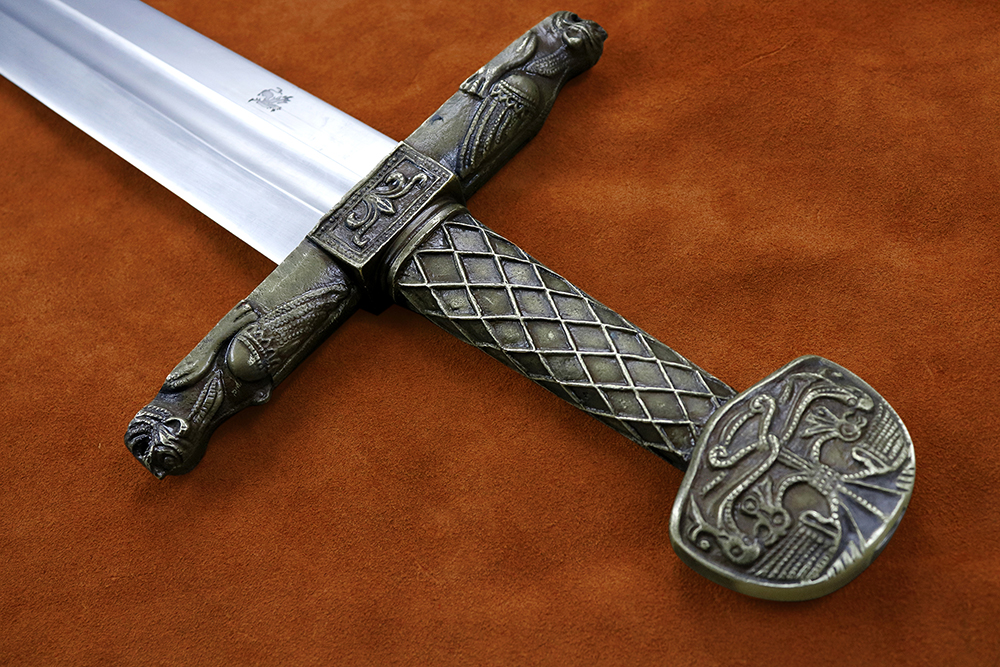
The Charlemagne Sword (1549)
The name Hauteclere, which hails from French origins, is as much a marvel as the sword itself. Known to be wielded by the great paladins during Charlemagne's time, this name exudes an air of elegance and power. In Archanea, one could draw parallels with Falchion and Gradivus—names that resonate with might and respect.
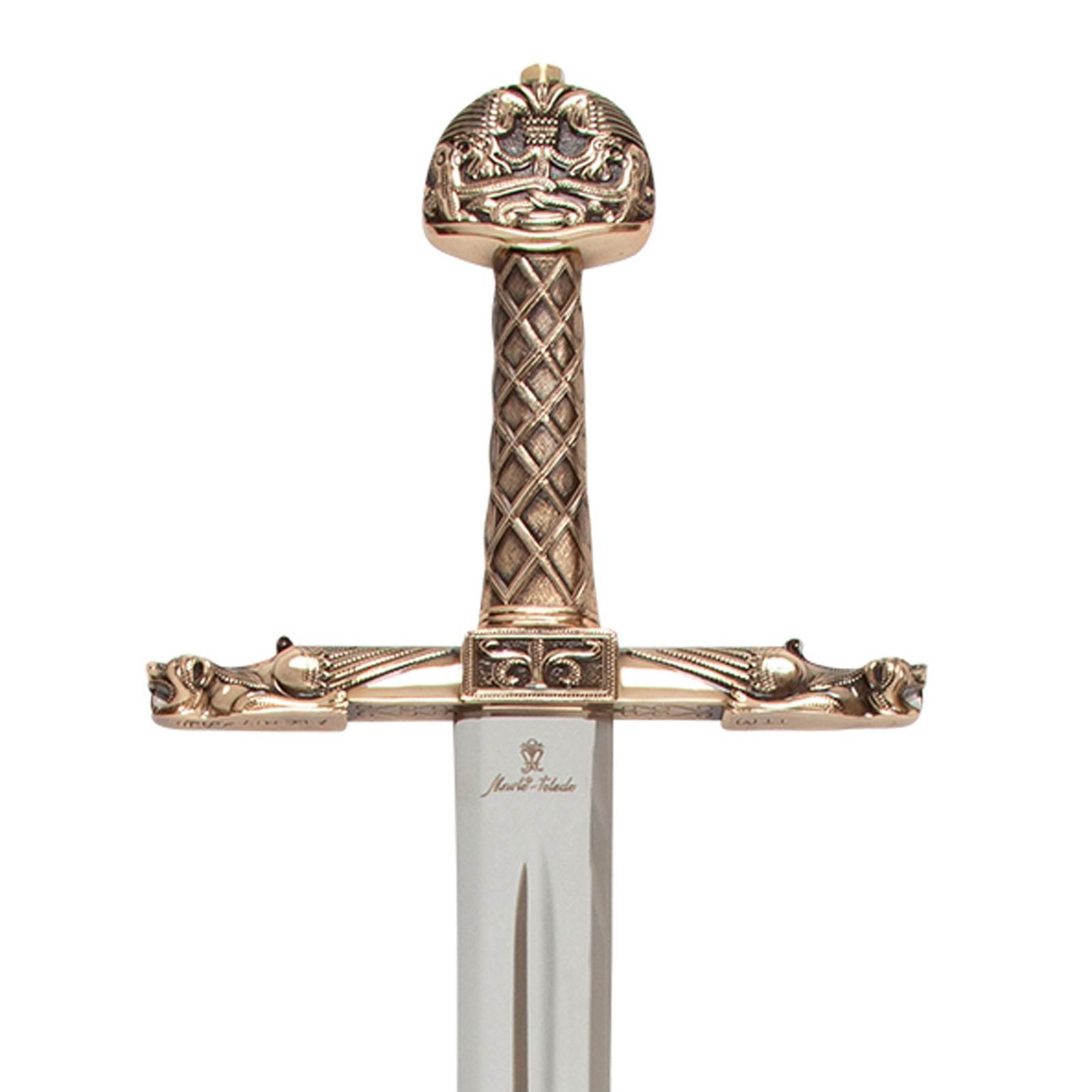
Charlemagne Sword Shop Historical Collectibles My Lineage
Joyeuse quickly earned a great reputation across the Old Continent and went on to become known as "the sword that conquered Europe." Most historians agree that the proud owner of this legendary weapon was Emperor Charlemagne, also known as Charles the Great, who is said to have used its magical powers to unite 9th century Western Europe, which largely shaped the medieval history of the.
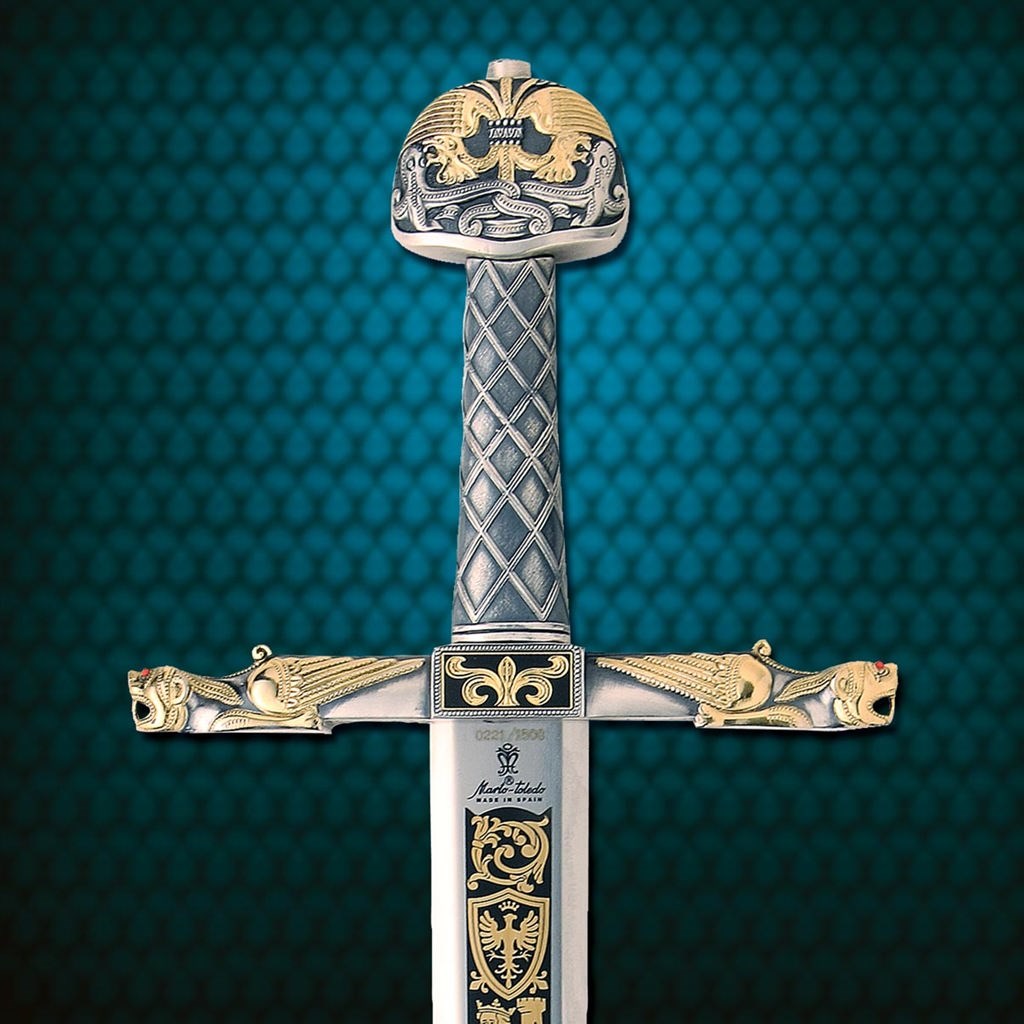
Sword of Charlemagne Limited Edition by Marto of Spain Museum Replicas
The Sword of Charlemagne has been carried and used in official coronations from the time of Charlemagne himself down until the 1800s. The sword was housed in the Basilica of St Denis from around 1505 until it was moved to the Louvre Museum in 1795 where it has remained ever since.. The story of how Charlemagne's sword ended up in Italy is both multi-generational and multi-national, it is.
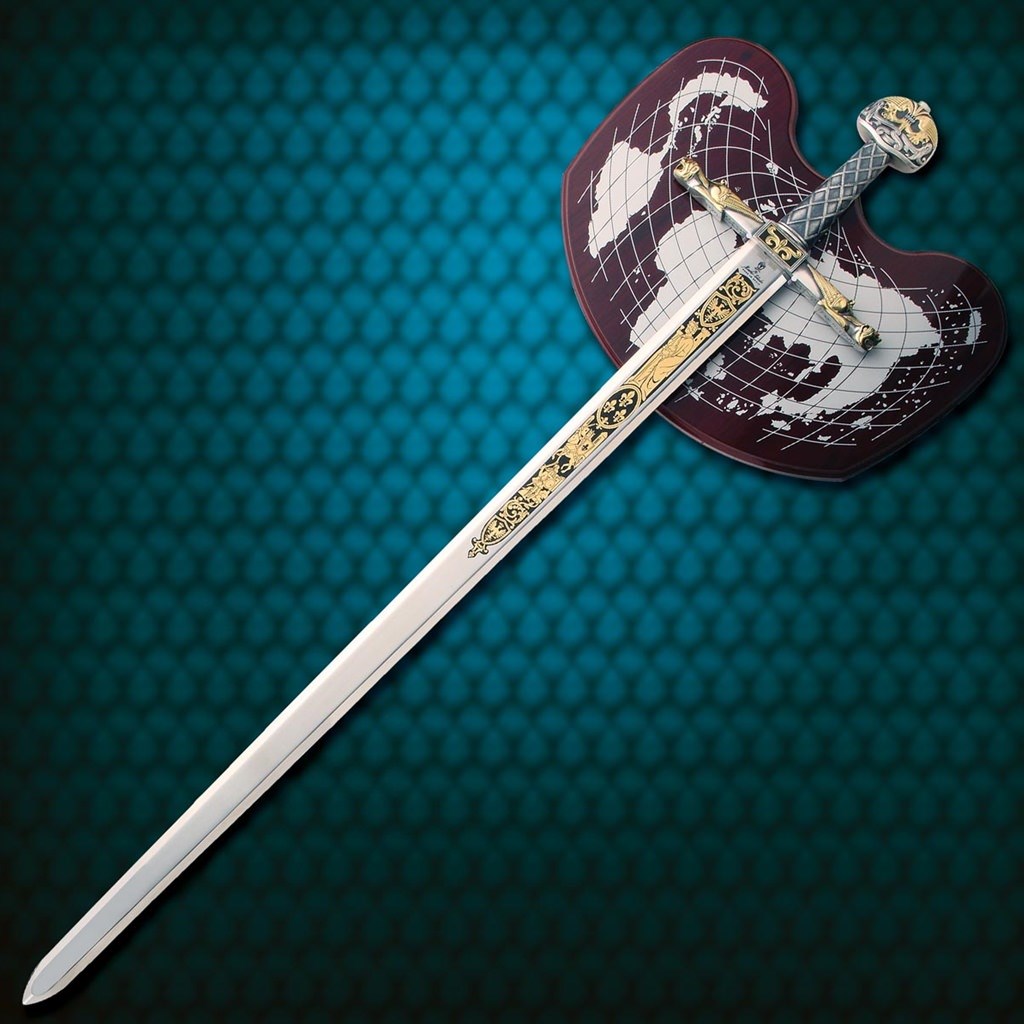
Sword of Charlemagne Limited Edition by Marto of Spain Museum Replicas
Charles the Great Born: April 2, 747? Died: January 28, 814, Aachen, Austrasia [now in Germany] Title / Office: emperor (800-814), Holy Roman Empire House / Dynasty: Carolingian dynasty Notable Family Members: father Pippin III son Louis I See all related content → Top Questions

Joyeuse Charlemagne's personal sword. 1300 years old. pics
The first and most famous of these epic tales was the Old French Chanson de Roland (The Song of Roland), a heroic poem from the 11th century based on the Battle of Roncevaux. In this poem, Roland is poetically associated with his unbreakable sword Durendal, various Christian relics, his horse Veillantif, and his oliphant.
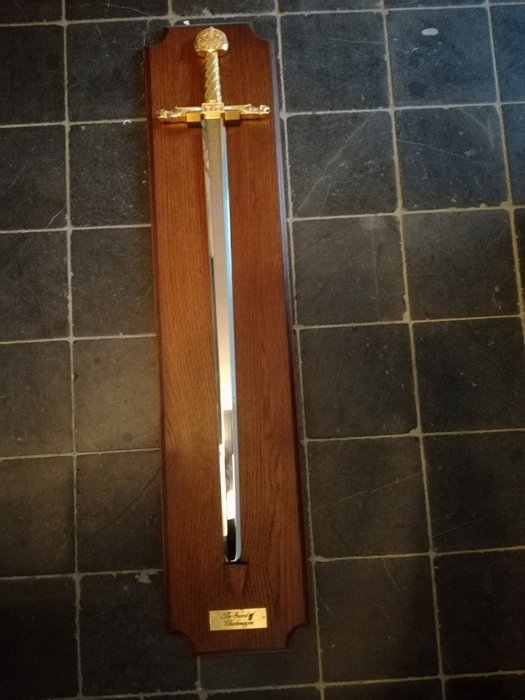
Sword of Charlemagne, Replica Franklin MInt Catawiki
Charlemagne (c747-814) was the ruler of a vast territory that later came to be known as the Holy Roman Empire. Becoming king of the Franks in 771, Charlemagne had a significant impact on theshape and character of medieval Europe. He embarked on several military campaigns across the continent, from Saxony in modern-day Germany to northern.
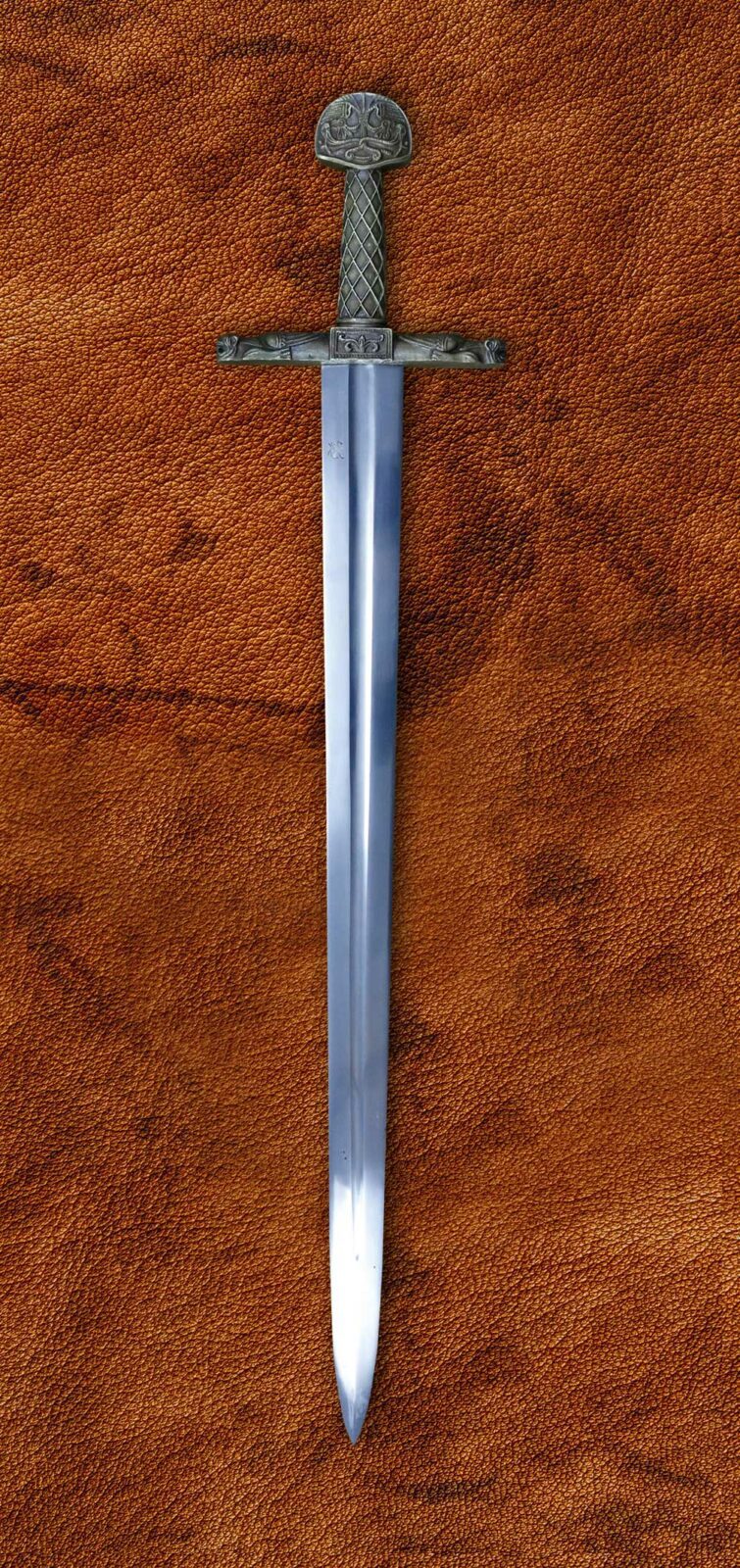
The Charlemagne Sword (1549)
"La Joyeuse" (French for "The Joyous") was the name given to the sword of Charlemagne (l. 742-814 CE) in Medieval legend. This 9th-10th Century CE sword, popularly identified as "Joyeuse", has been used in French coronation ceremonies from the 13th Century CE onwards.
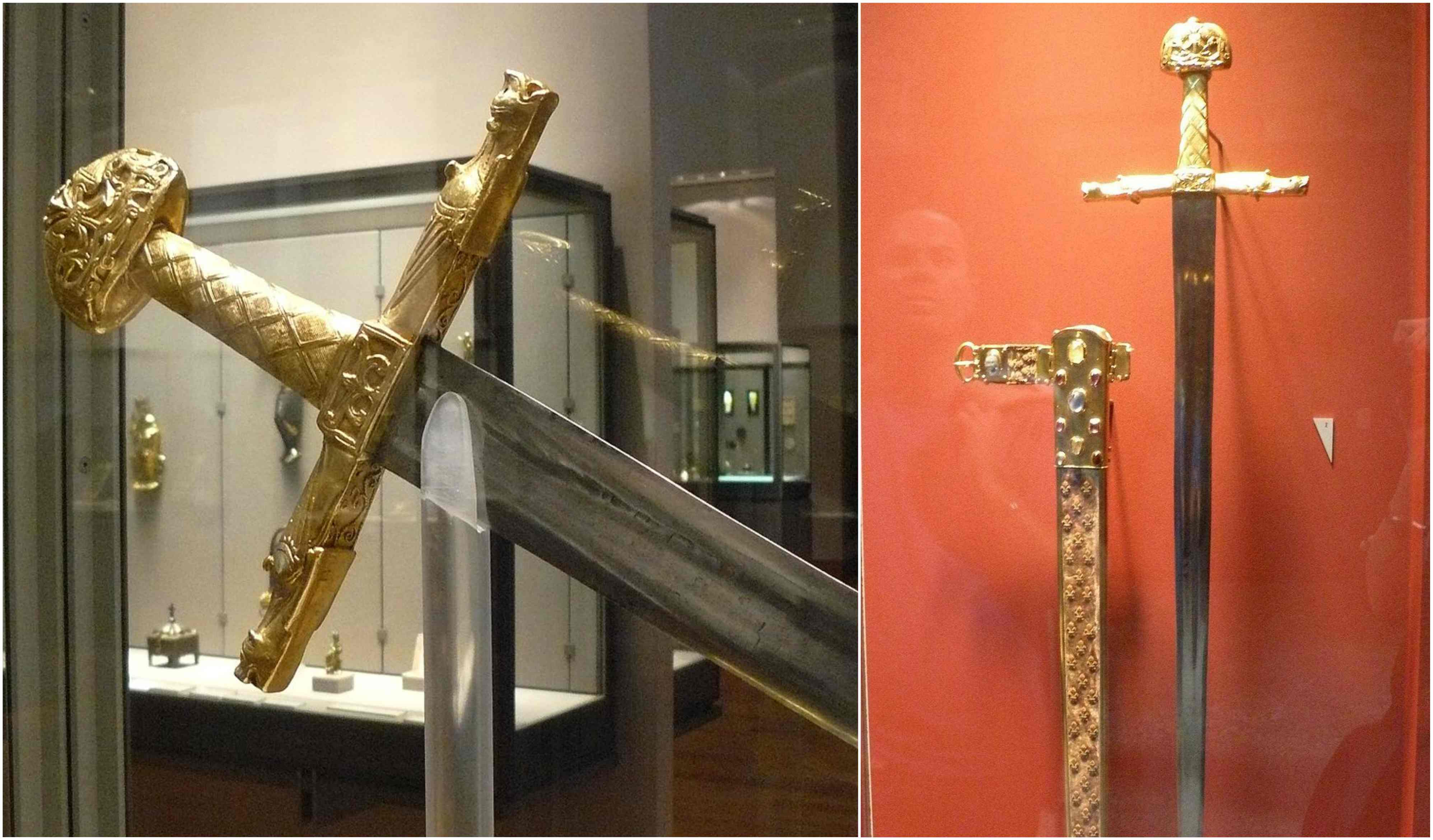
Joyeuse King Charlemagne’s legendary sword
From Wikipedia, the free encyclopedia For other uses, see Joyeuse (disambiguation) Joyeuse displayed in the Joyeuse ( pronounced [ʒwajøz]; Old French Joiuse; meaning "joyous, joyful") was, in medieval legend, the sword wielded by Charlemagne as his personal weapon.
JoyeuseSword of Charlemagne MyLineage
In the realm of legendary weapons, few have captured the imagination and fascination of historians, scholars, and enthusiasts quite like Joyeuse, the fabled sword of Charlemagne, King of the Franks and founder of the Holy Roman Empire. Steeped in myth and history, this iconic weapon has become a symbol of power, prestige, and chivalry.

Charlemagne Sword (Bronze) Swords Medieval Weapons
Durendal, also spelled Durandal, is the sword of Roland, a legendary paladin and partially historical officer of Charlemagne in French epic literature. It is also said to have belonged to young Charlemagne at one point, and, passing through Saracen hands, came to be owned by Roland. The sword has been given various provenances.

Charlemagne's Sword Louvre Middle ages art, Medieval art, Charlemagne
The sword appears in the medieval narrative La Chanson de Roland (The Song of Roland) where it is given to Charlemagne by an angel at the Vale of Moraine in England. In this poem, the angel tells Charlemagne that the sword's golden hilt contains the tooth of Saint Peter, the blood of Basil of Caesarea, the hair of Saint Denis, and a piece of.

Sword of Charlemagne Limited Edition by Marto of Spain Museum Replicas
Charlemagne [b] ( / ˈʃɑːrləmeɪn, ˌʃɑːrləˈmeɪn / SHAR-lə-mayn, -MAYN; 2 April 748 [a] - 28 January 814) was King of the Franks from 768, King of the Lombards from 774, and Emperor from 800, all until his death.
41" Medieval The Sword of Charlemagne Replica with Scabbard Brand New eBay
The Authentic "Sword of Charlemagne" Today, there are two swords attributed to Charlemagne. One, a saber, is kept in the Weltliche Schatzkammer (Imperial Treasury) in Vienna, Austria, while the sword covered in this article is kept in the Louvre Museum in Paris, France (catalog number MS 84 ).
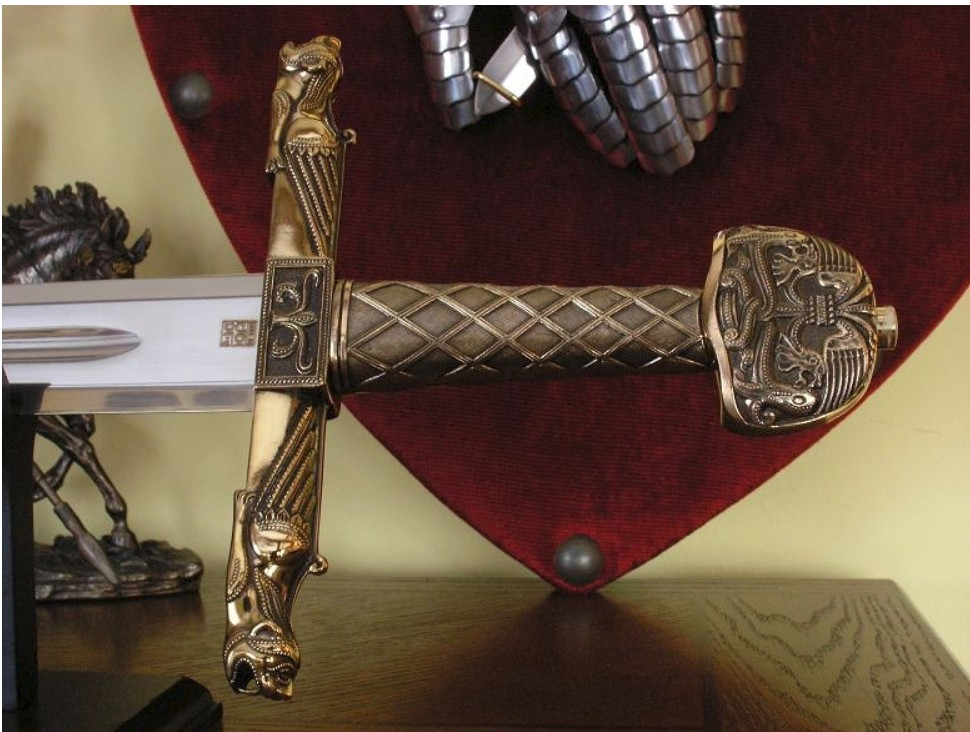
Charlemagne Bronze Sword FACTSHEET Total length 110 cms. Place of...
The sword of Charlemagne, the Joyeuse, still exists and is on display in France. The relic is a great artifact of the past and is one of the few remaining mythical swords in history. The.

Sword of Charlemagne The Joyeuse Sword of the Frankish King Malevus
June 20, 2023 Table of Contents The king of the Franks, Charlemagne carried a sword known as the Joyeuse (French: l'épée de Charlemagne) or the Sword of Charlemagne. Joyeuse also means "joyful" or "rainbow" and this sword had been used during the crowning of French kings and queens since the reign of Charlemagne.

eBay Sponsored THE SWORD of CHARLEMAGNE 24K Gold Electroplate from Charles the Great Wall Mount
Charlemagne's mysterious sword was said to contain the relics of saints. Its magical power gave protection to the owner from death by poison. It could change color thirty times a day, and the sword blinded the enemy by shining brightly in the sun. It was almost the same with Excalibur, King Arthur's famous but legendary sword.